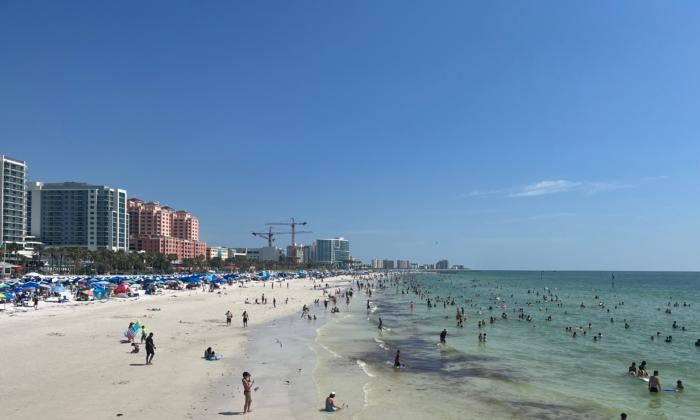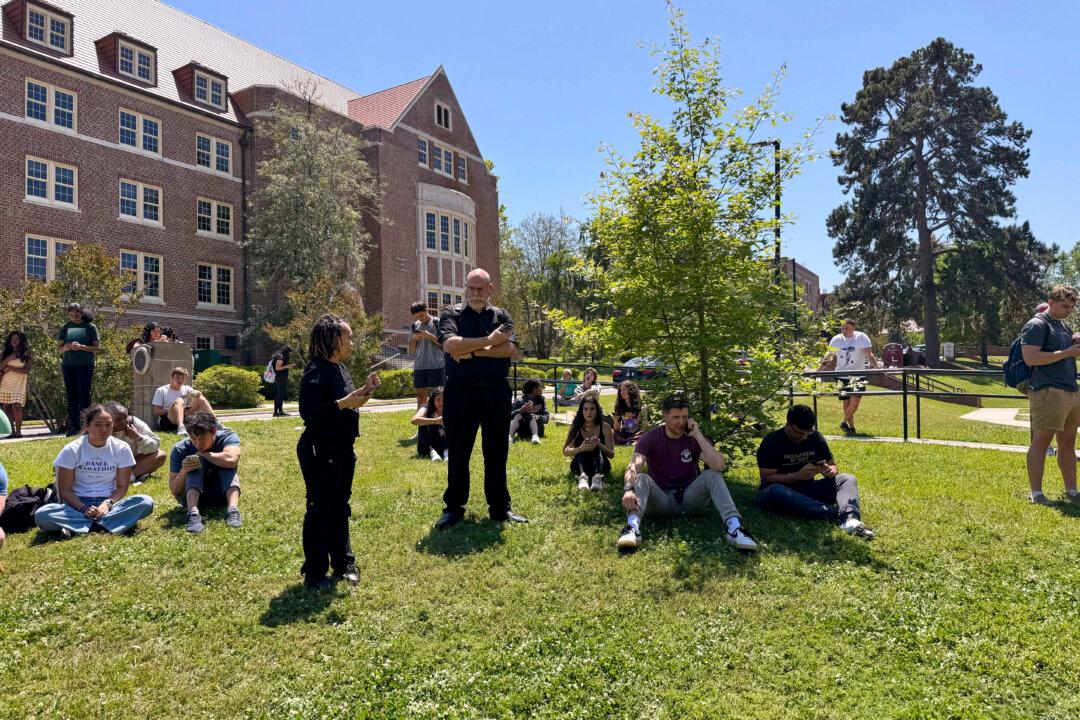Florida beachgoers in five counties were issued “no swimming” advisories from the state Department of Health after tests found high levels of bacteria in the water.
While all beaches remain open, health officials advise against swimming in the water and ingesting any shellfish, shrimp, or fish caught in the affected areas.
The no-swimming warnings were for five Florida counties and included Bahia Beach (Hillsborough), Davis Island Beach (Hillsborough), Fort Island Gulf Beach (Citrus), Bayou Grande (Escambia), Bowditch Park (Lee), Cape Coral Yacht Club (Lee), Higgs Beach (Monroe), John Pennekamp Beach (Monroe), and South Beach in Key West (Monroe).
Advisories for Sarasota County’s Casperson Beach and Siesta Key Beach were lifted on Sept. 29 after bacteria samples returned to safe levels, according to the Florida Department of Health.
Clearwater Beach in Pinellas County was issued a no-swimming notice on Aug. 28 but has tested at safe levels since.
State health officials conduct bi-weekly water testing at beaches to determine levels of enterococci, a type of enteric fecal bacteria that originates in humans and animals.
A high presence of this bacteria is sometimes linked to fecal pollution, which reaches the ocean through stormwater runoff, wildlife and pets, and human sewage, according to the Florida Department of Health (FDOH) website.

High levels of fecal bacteria can lead to infections or rashes if they are ingested or enter the body through skin cuts and sores, the FDOH said.
Even though some health officials say immune-compromised citizens are more at risk of reactions, all people are in danger of infections if they swim in the contaminated water, James “Jae” A. Williams III, press secretary for the department, told The Epoch Times.
“Don’t get in water that smells bad and looks nasty. If you stay away from that, you’re gonna be okay,” Mr. Williams said.
A representative from the Tampa Bay Estuary Program told The Epoch Times that the bacteria primarily gets into the ocean from stormwater runoff.
Sometimes, public sewage systems get overwhelmed by excessive rain or storm surges.
Mr. Williams explained that hurricanes are the biggest environmental triggers for water bacteria levels. The rainfall and storm surge deluge the coastlines, washing human and animal waste into the ocean.
According to Mr. Williams, pets are one of the biggest factors for water fecal bacteria levels.
Pet owners, particularly those with dogs, sometimes walk their animals on the beach and fail to properly pick up the waste, he said.
When tidal conditions cause water to flush the beaches, all that fecal bacteria gets pulled into the ocean, causing positive test results.
“This is one of those things where it’s like, we’re not talking about global warming or anything like that. This is just common sense, like clean up after your pets,” Mr. Williams said.
After Hurricane Ian, health officials stopped swimming for weeks at affected beaches because so much debris and waste were pulled into the Gulf of Mexico by the storm surge, Mr. Williams said.
In those situations, officials cannot be sure what contaminants are present because so much waste and runoff stay in the water for days or weeks.
The Tampa Bay Estuary Program said human source tracking is done when beaches repeatedly test positive for fecal bacteria. Sometimes, additional testing has to be ordered to determine the human source, such as a broken sewer line.
While some beaches test higher during the warm summer months, Mr. Williams urges that this is not a hard and fast rule.
Counties like Sarasota and Pinellas with elevated winter tourist activity might still see high test results when the weather cools off, even if warm water typically feeds bacterial growth, he said.







